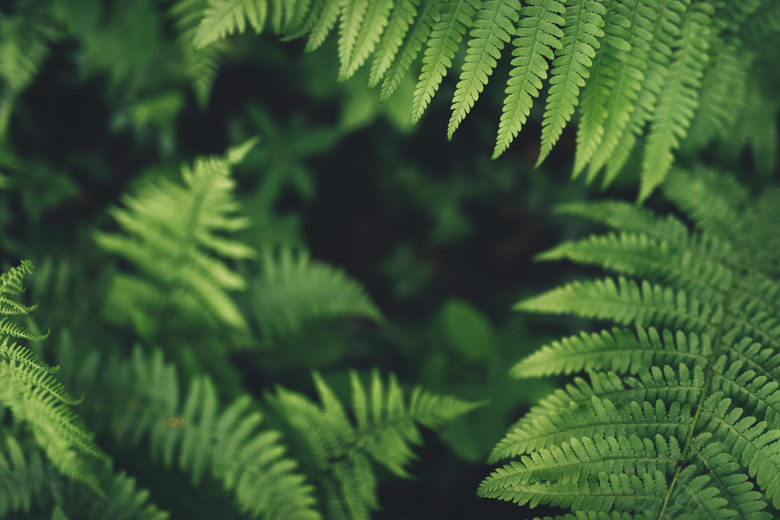List Of Nonflowering Plants
Nonflowering plants can be much more interesting than their monochromatic or variegated outward appearance would allow you to think. There is a wide range of nonflowering shrubs and plants that can add depth, texture and waves of color to your home or outdoor garden area.
A flowering garden is a beauty to behold. It can also set off fits of sneezing, red eyes and other allergic reactions. A garden filled with nonflowering plants can be just as stunning and colorful as a garden filled with bright blooms.
Difference Between Flowering and Nonflowering Plants
Difference Between Flowering and Nonflowering Plants
More than a pretty bloom separates a flowering specimen from a nonflowering shrub, bush, plant or tree.
Flowering plants have striking male and female parts that make a replica of the parent plant once they have successfully mingled. A nonflowering plant can be just as striking in appearance but performs its propagating purposes with much less flair. Flowering plants are in the angiosperm category, and nonflowering plants are in the gymnosperm category.
Gymnosperms provide a stunning backdrop, with bulbous seed pods mixed with reedy branches or thin leaves. These plants reproduce through seeds that aren't encompassed by a thick skin or fruit. These are called naked or exposed seeds.
Definition of a Nonflowering Plant
Definition of a Nonflowering Plant
It seems straightforward enough. A plant that doesn't have a cycle that produces flowers is in the category of a nonflowering plant. However, they still produce offspring of a sort in order to propagate.
A plant that doesn't produce flowers will still produce seeds or spores in order to proliferate. They are typically asexual, meaning they tend not to need a tree or plant of the same type and different gender close by to ensure it can fertilize its seeds or spores.
The simplest form of nonflowering plants is mosses. Tiny and mostly rootless, mosses can grow in moist places high and low outdoors. Ferns are on the other end of the nonflowering spectrum, with bright, showy falls of colorful leaves.
Ferns and Fronds
Ferns and Fronds
Ferns can create fans of color and texture in a garden or indoor space. Fern fronds can reproduce when the tiny spores that form on the back of the leaflets are shaken loose from the main plant and carried on the wind.
Types of ferns with colorful fronds that are ideal for color include:
- Autumn fern (Dryopteris erythrosora, USDA zones 6-12) – The leaves of this evergreen fern begin as a
rusty pink and turn bright green in the hot summer months until turning a deep
shade of copper in the fall. - Southern shield fern (Thelypteris normalis, zones 7-10) – The spindly light-green, frilly fronds
of this deciduous fern stand out as a bright spot all year long. It can
tolerate sunny yards or full-shaded spots. - Japanese painted fern (Athyrium niponicum var. pictum, zones 4-9) – The tousle of silver, gray and burgundy
leaves atop long, dark-purple stems is a dainty addition to a tabletop or end
table indoors. It will also work well in a dappled garden outdoors.
Plants That Grow Without Flowers
Plants That Grow Without Flowers
Examples of plants that provide depth, texture and color without flowering include:
- Liverworts (family Marchantiaceae) – These are small, moss-like plants that grow well on rocky
terrain or within craggy retaining walls. - Horsetails (family Equistaceae)
–
These reeds are surprisingly adaptable to dry or wet climates. They will spread quickly and need to be contained if put in the ground. They can grow as tall as 26 feet if not contained.
Names of Trees Without Flowers
Names of Trees Without Flowers
Conifers are gymnosperms. They tend to grow male and female cones that spread its seed and have long, thin needles or leaves. Trees without flowers include:
- Cedars (Cedrus spp.)
- Cypresses (multiple species)
- Junipers (Juniperus spp.)
- Firs (Abies spp.)
- Pines (Pinus spp.)
- Redwoods (multiple species)
- Yews (Taxus and Cephalotaxus spp.)
- Spruces (Picea spp.)
- Larches (Larix spp.)
